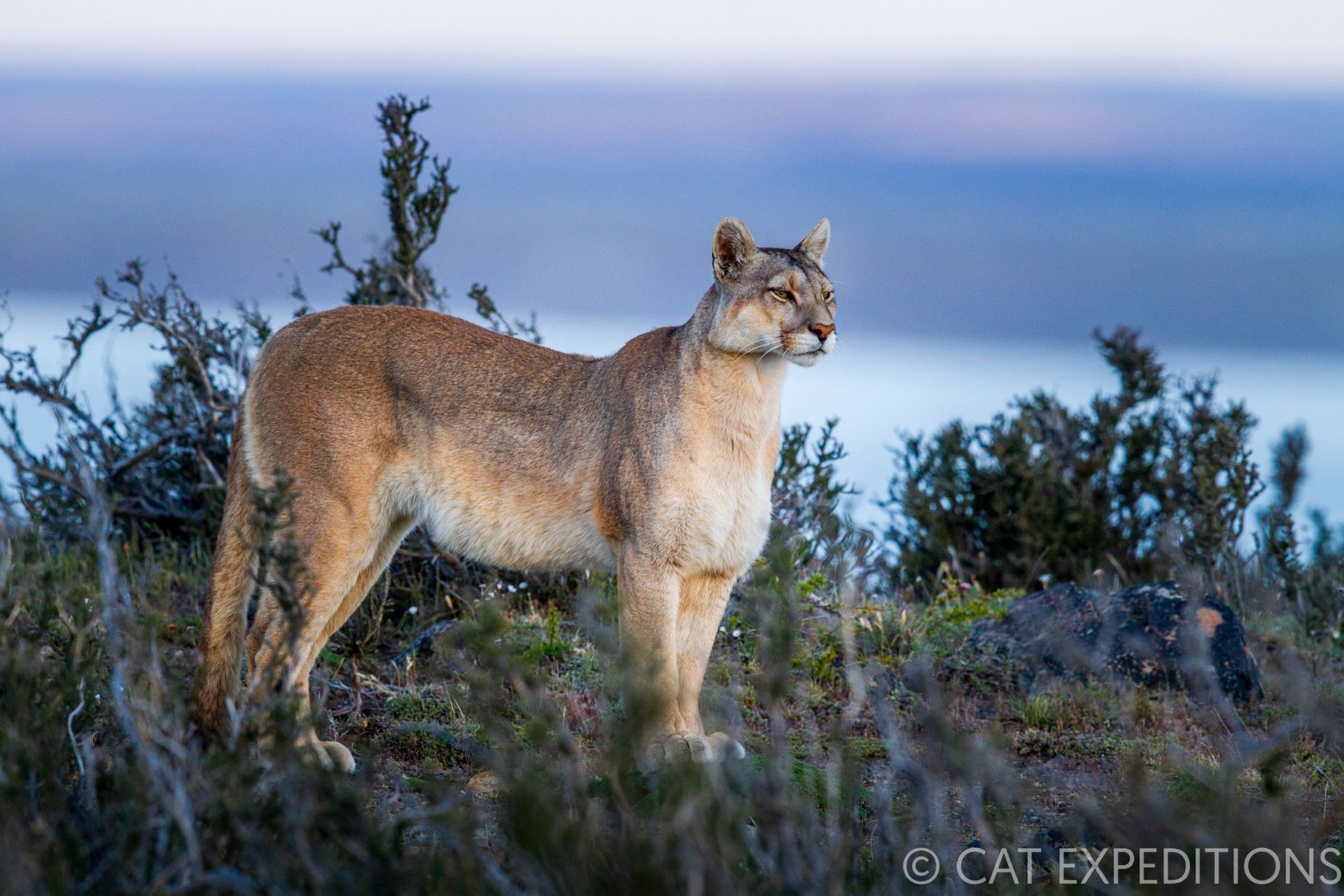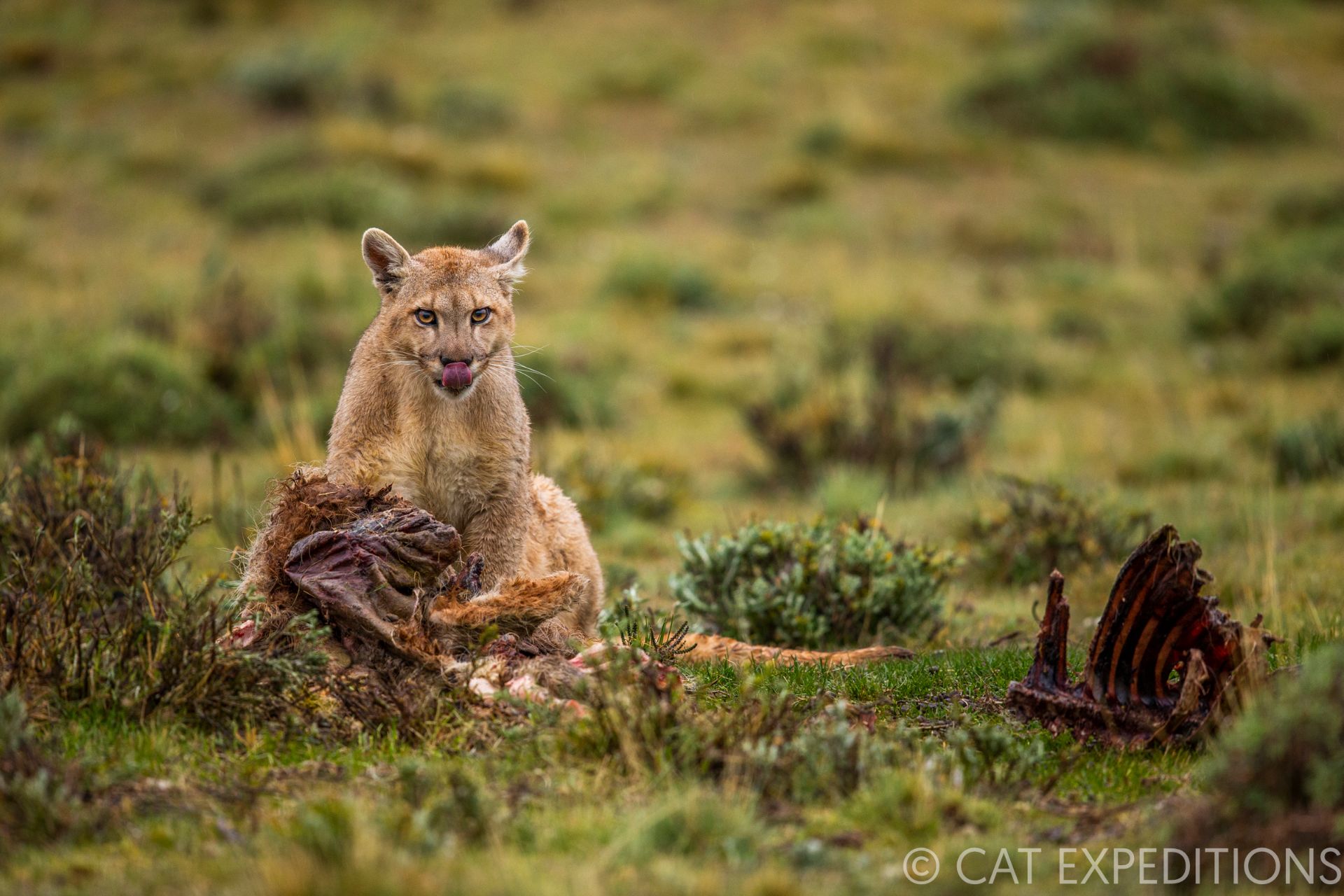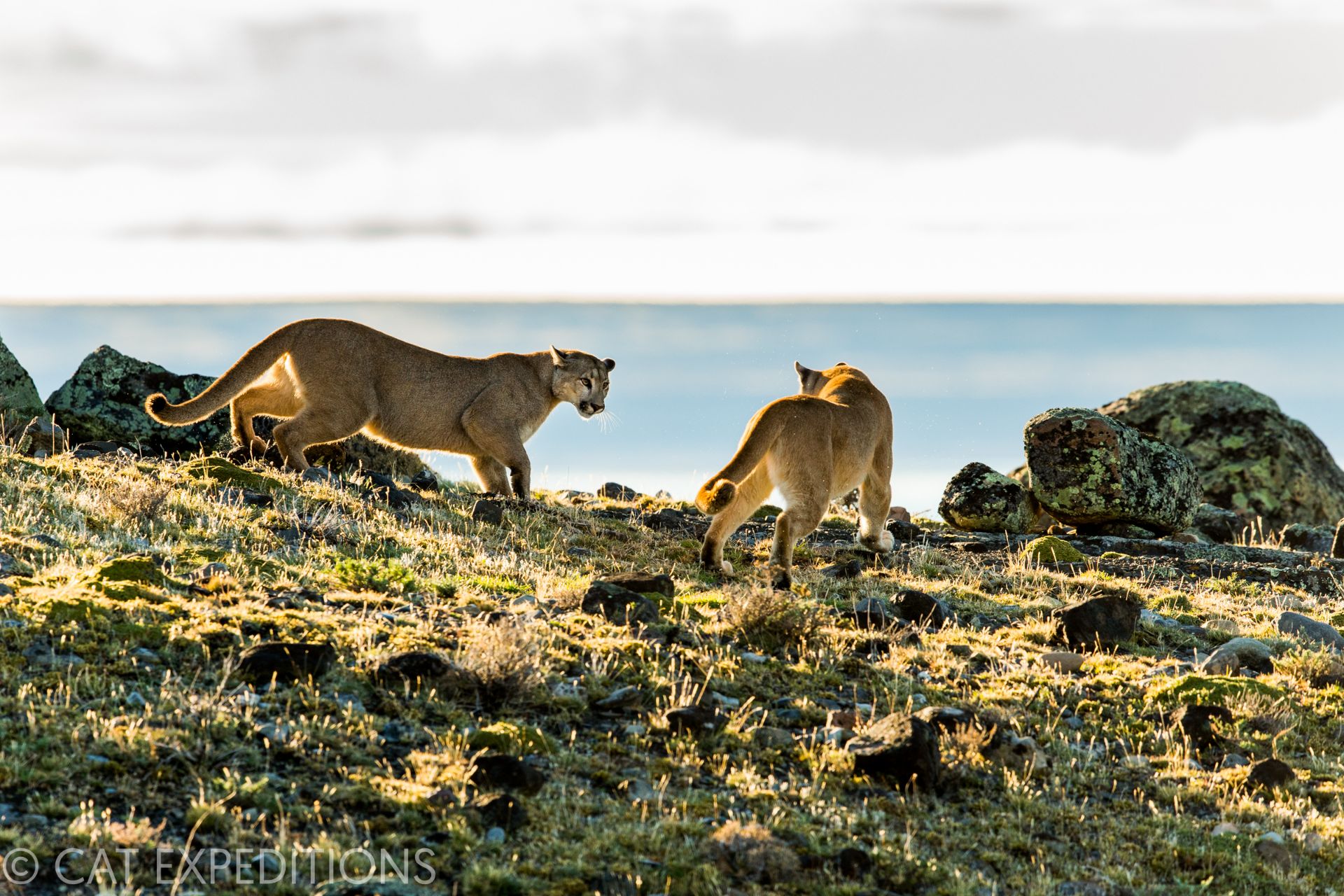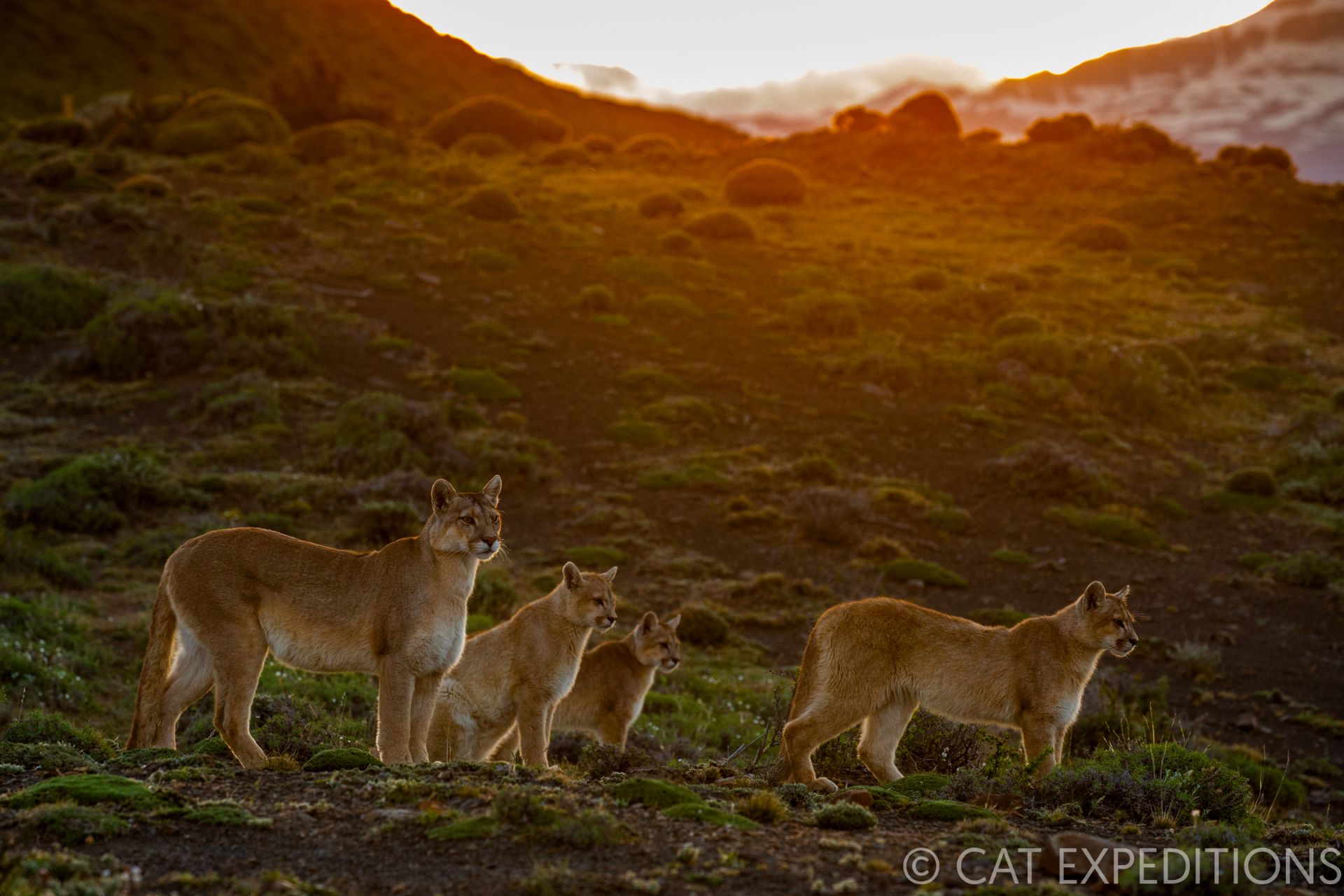Puma
PUMA (Puma concolor)
The cat of many names, the puma is also known as mountain lion, cougar, catamount, shadow cat, and in Florida as a panther. Its latin name means cat of one color, describing the uniform brown, tan, or even reddish coat pattern of this beautiful cat. Though we think of pumas as big cats, they are actually more closely related to the small cats, like the jaguarundi.
Difficulty: Easy
Puma Tour Statistics
6 PUMA
TOURS RUN
14 AVG NUMBER OF CATS SEEN PER TOUR
70 MINUTES ON AVG
WITH EACH CAT
Puma Description
Rupestra, a female distinguished by her elongated face, and slightly darker head. She gave birth to her last litter of four cubs in 2019.
Puma Distribution and Habitat
Blinka hanging out in typical pre-Andean shrubland habitat. She sticks out in this photo, but most of the time the pumas blend into their habitat incredibly well.
Puma Feeding Biology
Sol licking her lips while feeding on a guanaco killed two days prior. Almost all of the carcass has been eaten. Blinka made the actual kill, Sol just swooped in to feed.
Puma Social Organization
Petaca, on the left, is in a defensive posture here with Blinka. Petaca was following Blinka all day, but Blinka didn’t seem to want company that day.
Puma Reproduction
Rupestra in 2019 with three of her four kittens at sunset. It is remarkable that she has raised all four cubs to adulthood. What an incredible mom.





